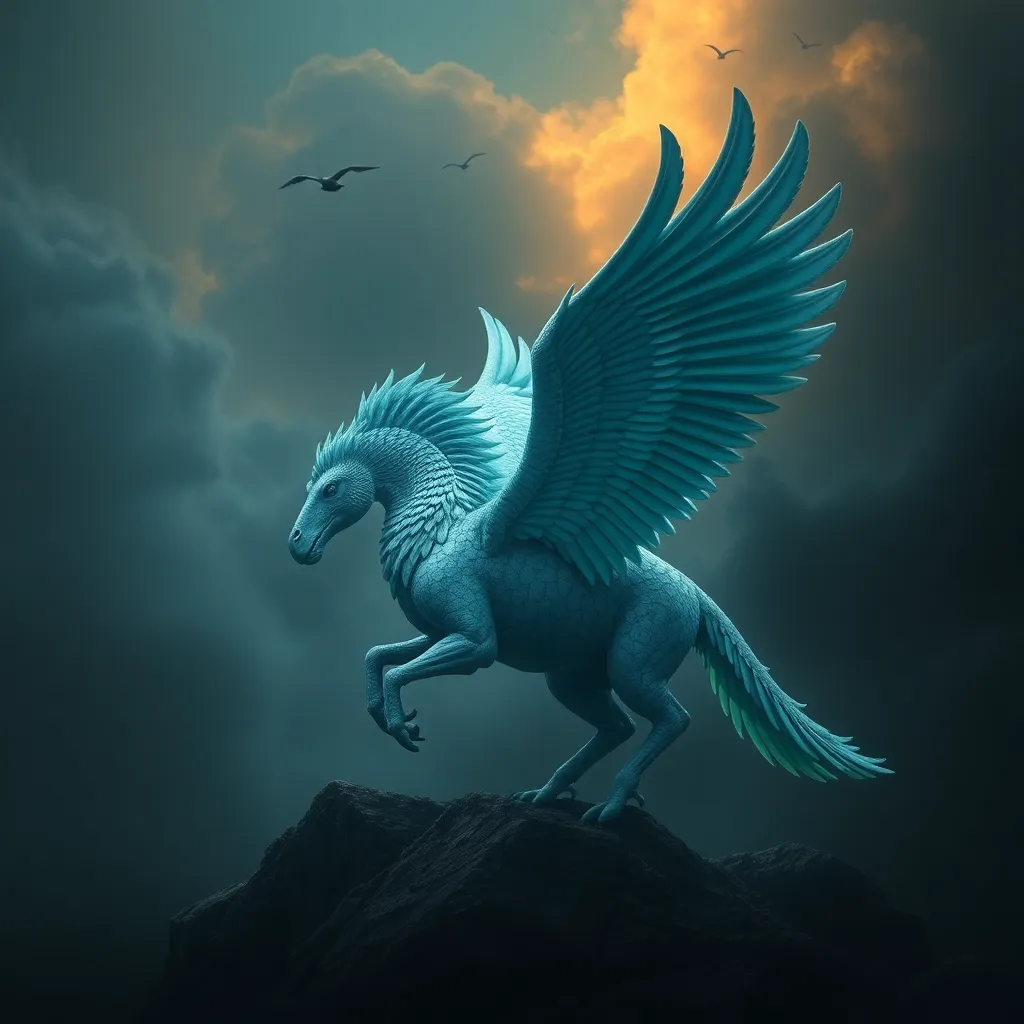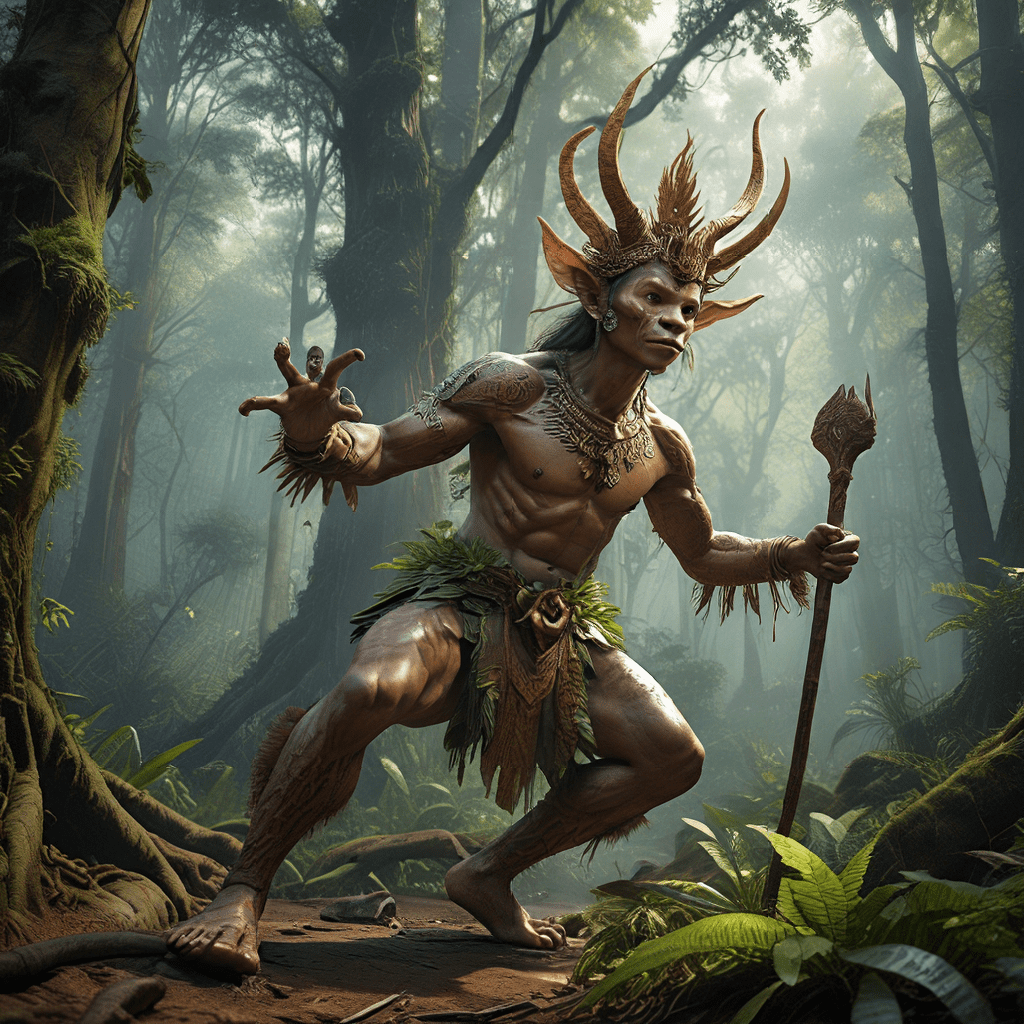The Hippogriff: A Global Mythological Journey
I. Introduction
The hippogriff is a fascinating mythical creature, often depicted as a blend of a horse and a griffin, possessing the front quarters of an eagle and the back of a horse. With its majestic wings and noble demeanor, the hippogriff has captivated the imagination of many across various cultures.
Throughout history, the hippogriff has held significant cultural importance, symbolizing bravery, freedom, and the extraordinary. Its unique hybrid nature allows it to traverse both the terrestrial and celestial realms, making it a compelling subject of myth and art.
This article aims to explore the historical origins of the hippogriff, its representation in folklore and popular culture, and its symbolic meanings across different societies. We will also examine its artistic depictions and the enduring legacy it has created in the world of mythology.
II. Historical Origins of the Hippogriff
A. The Birth of the Hippogriff in Literature
The hippogriff first appeared in literature in the 16th century, specifically in Ludovico Ariosto’s epic poem “Orlando Furioso.” Ariosto introduces the creature as a symbol of both nobility and the fantastical, capturing the imagination of readers with its extraordinary abilities and majestic presence.
B. Contributions of Mythological Traditions
The hippogriff draws from various mythological traditions, combining elements from the griffin—a creature with the body of a lion and the head and wings of an eagle—and the horse, a symbol of strength and freedom. This amalgamation reflects the cultural significance of both animals across different civilizations.
C. Key Figures in Hippogriff Lore
In addition to Ariosto, other authors and artists have contributed to the lore of the hippogriff. Notable figures include:
- John Milton, who referenced the creature in his works.
- William Shakespeare, particularly in his play “A Midsummer Night’s Dream.”
- Various Renaissance artists who depicted the hippogriff in their paintings and drawings.
III. The Hippogriff in European Folklore
A. Representation in Medieval Literature
During the medieval period, the hippogriff became a symbol of chivalry and adventure. It was often portrayed as a noble steed for knights, embodying virtues such as courage, loyalty, and honor.
B. The Role of the Hippogriff in Chivalric Tradition
In chivalric romances, the hippogriff served as a means of transportation for heroes embarking on noble quests. Its ability to fly represented transcendence and the pursuit of higher ideals.
C. Notable Works Featuring the Hippogriff
Some key literary works that feature the hippogriff include:
- “Orlando Furioso” by Ludovico Ariosto
- “The Faerie Queene” by Edmund Spenser
- Various Renaissance ballads and tales.
IV. The Hippogriff in Modern Popular Culture
A. Appearances in Film and Television
The hippogriff has made numerous appearances in modern films and television shows, most notably in the “Harry Potter” series, where it is portrayed as a loyal companion and a creature of great beauty and power.
B. The Hippogriff in Video Games and Literature
In the realm of video games, the hippogriff often appears as a mount or creature that players can interact with. Examples include:
- The “World of Warcraft” series
- “Final Fantasy” games
- Various fantasy role-playing games.
C. Analysis of its Contemporary Symbolism
Today, the hippogriff symbolizes the fusion of strength and grace, often representing the idea of overcoming challenges and embracing one’s dual nature. Its continued popularity in modern media reflects a persistent fascination with hybrid creatures.
V. Global Variations and Comparisons
A. Similar Mythological Creatures in Different Cultures
Many cultures feature mythological creatures similar to the hippogriff, such as:
- The griffin in ancient Greek mythology.
- The Chinese dragon, representing power and strength.
- The chimaera in Greek mythology, a fire-breathing creature with parts from different animals.
B. Comparative Analysis of the Hippogriff and Other Hybrid Beasts
When comparing the hippogriff to other hybrid beasts, we see diverse representations of duality. For example, the sphinx combines human and lion features, symbolizing wisdom and mystery, while the centaur represents the balance of civilization and nature.
C. Interpretation of the Hippogriff in Non-Western Mythologies
In various non-Western cultures, hybrid creatures often embody different values and morals. The hippogriff’s representation as a noble beast echoes the themes found in Eastern mythology, where dragons embody both benevolence and ferocity.
VI. Symbolism and Themes Associated with the Hippogriff
A. The Duality of Nature: Beast and Bird
The hippogriff’s unique hybrid form symbolizes the balance between opposing forces, such as strength and grace, land and sky. This duality serves as a metaphor for the human experience, reflecting our own struggles and aspirations.
B. Representations of Freedom and Nobility
The ability of the hippogriff to soar through the skies represents freedom and the pursuit of noble ideals. It encourages individuals to rise above challenges and embrace their potential.
C. The Hippogriff as a Metaphor for Aspirations
As a creature of both earth and air, the hippogriff embodies the aspiration to transcend limitations, urging people to reach for their dreams and embody their noblest qualities.
VII. The Hippogriff in Art and Illustration
A. Artistic Depictions Through the Ages
Throughout history, the hippogriff has been a subject of artistic exploration, featuring prominently in various mediums, from paintings to sculptures. Artists often depicted it as a majestic creature, emphasizing its grace and power.
B. The Influence of the Hippogriff on Visual Arts
The hippogriff has influenced a variety of artistic styles, inspiring both classical and contemporary artists. Its dynamic form and symbolic significance continue to resonate in visual storytelling.
C. Iconic Artists and Their Interpretations
Some iconic artists who have illustrated the hippogriff include:
- Gustave Doré, known for his detailed engravings.
- Salvador Dalí, who incorporated fantastical elements in his surrealist works.
- Contemporary illustrators in fantasy literature.
VIII. Conclusion
A. Summary of Key Points
The hippogriff, as a hybrid creature, has captured the imagination of cultures around the world, serving as a symbol of nobility, freedom, and aspiration. Its origins in literature and continued presence in modern media highlight its enduring appeal.
B. The Enduring Legacy of the Hippogriff
From medieval literature to contemporary films, the hippogriff continues to represent the complex interplay between strength and grace, inspiring generations to dream and aspire for greatness.
C. Future Directions for Research and Exploration
As we continue to explore the rich tapestry of mythology and symbolism surrounding the hippogriff, there remains ample opportunity for research into its influence across cultures and its evolving representation in art and literature.



